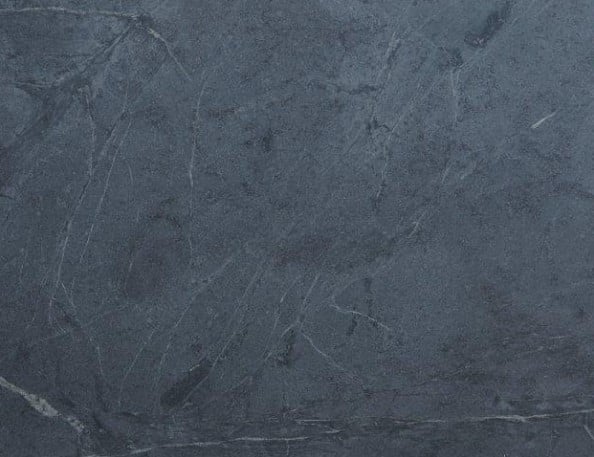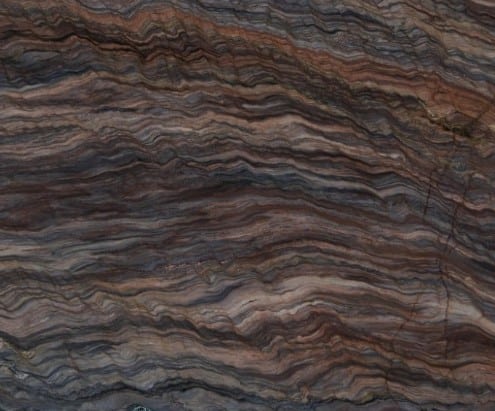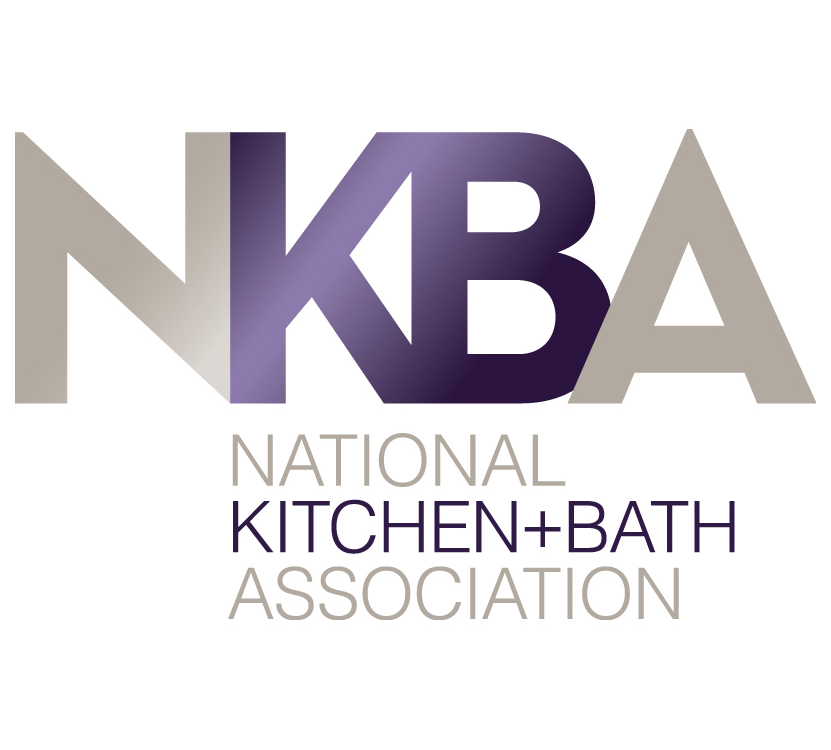
If you’re curious about the benefits of soapstone while doing research for your kitchen or bathroom renovation project, look no further! In this blog, Cosmos SurfacesTM takes a look at the properties of this gorgeous natural stone surface.
What is Soapstone?
Soapstone, named for its “soapy” feel, comes from the mineral talc. Talc is the softest mineral on Earth, measuring a 1 on the Mohs hardness scale. The amount of talc in soapstone varies, which means the overall hardness of the stone will vary as well. Commercial soapstone slabs intended for practical use contain less talc, with the remaining composition including harder minerals like chlorite, magnesite and amphibole. This broad variation in potential mineral components and their percentages makes soapstone more of a family of stones. You’ll want to work with a reputable dealer and spend some time investigating the specific stones you are considering.
The Benefits of Soapstone
Soapstone offers three major benefits: heat resistance/retention, acid resistance and absorption resistance/non-porosity. These properties enable soapstone to be used as sinks, countertops, floors, hearths, stoves and more. Let’s take a closer look:
- Heat Resistance and Retention: Magnesite, a main component of soapstone, has the ability to retain heat, making soapstone an excellent choice for a hearth or fireplace. The stone is capable of absorbing, retaining and radiating warmth long after a fire has gone out – a very desirable property in cold climates!
- Acid Resistance: Soapstone is a favored surface choice in laboratories, as its talc component is chemically inactive. This means soapstone tends to be unaffected by acids. This property, along with its heat resistance, translates well into the kitchen, where it is commonly used for countertops, islands and kitchen sinks. Because soapstone is soft, it is not ideal as a cutting surface – but it can take a spill of acidic lemon juice or wine without being damaged.
- Absorption Resistance/Non-Porosity: Soapstone is very dense, which makes it highly resistant to staining. The talc it contains is hydrophobic, which means it actually repels water. The dense composition of small minerals that makes up soapstone means it will not absorb liquids or harbor bacteria – both great properties to have on your side in the kitchen!
A Word on Maintenance
Soapstone is a great choice for those who want the option of self-maintenance/repair. Since soapstone lacks the hardness of surfacing materials like granite, for example, it might take on scratches, chips or gouges from everyday wear and tear or accidents. However, these can be fixed! Small scratches can be removed with a coat of mineral oil, while larger marks can be removed with sandpaper. Even gouges can be filled with a mixture of stone chips and epoxy, making soapstone a user-friendly option when it comes to DIY repairs.
Soapstone looks best when it is oiled with a thin layer of mineral oil. This ensures consistent coloring and keeps your soapstone looking fresh and vibrant. It is important to note that soapstone cannot be polished to a glossy finish, but rather retains a soft, warm glow.
If you have questions about soapstone, contact us or give us a call today! Cosmos SurfacesTM has a gorgeous selection of soapstone and other natural stone surfaces and our team of experts is always ready to help!
Color of the Month: Cinnamon Stick
This month’s featured trending color is Pantone 18-1345, Cinnamon Stick! The Pantone Color Trend Report says, “Earthy and warm, Cinnamon Stick is sweet yet spicy.”

Fusion Melange forms a complex conglomerate of colors. Reminiscent of the California Gold Rush, Fusion Melange is comprised of golds, reds, blacks, and silvers in intricate waves of texture. When installed both inside and out, Fusion Melange looks stunning among dark woods. The Fusion Melange quartzite is resistant to scratching, staining, and fading, and the beauty is unmatched.












